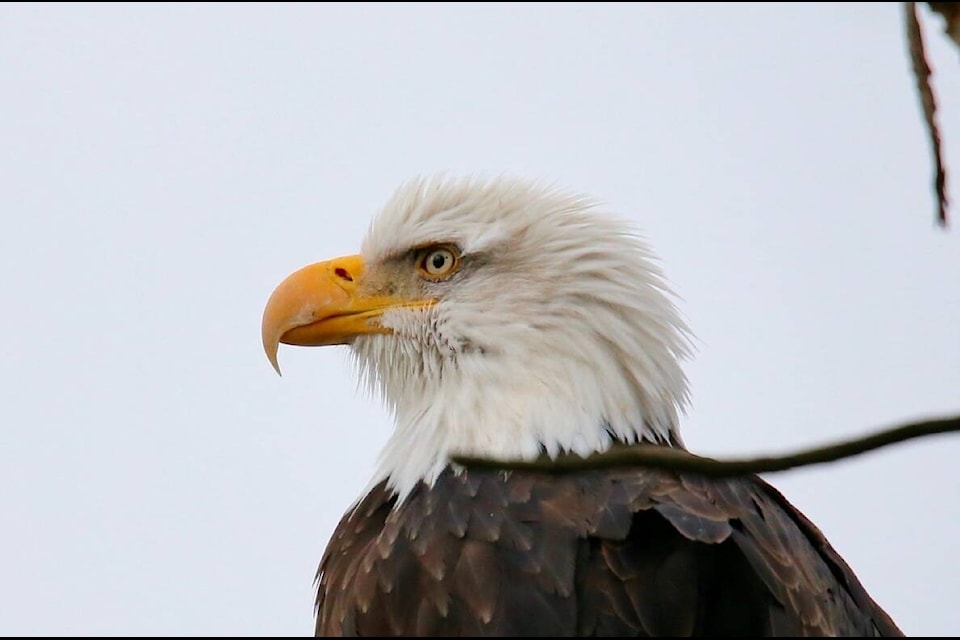Ron Wilson shares a few closeups he snapped of this majestic bald eagle (Haliaeetus leucocephalus) that landed near the shore between Gyro Park and Sunningdale on Friday.
Ron adds, “The last pic makes me laugh. After about 30 photos he/she is telling me ‘enough is enough’ because one more and I will fly away.”
A welcome sight near the Columbia River in Trail is the bald eagle, as they were rarely seen at the city shoreline until 25 or-so years ago.
See more: https://www.trailtimes.ca/community/eagles-line-the-trail-riverbank-5053177
Feeding
The bald eagle feeds primarily on fish, aquatic birds, and mammals, which it may take alive or find dead. Much of its live prey, especially the waterfowl, consists of sickly individuals or those wounded by hunters. When its staple foods are not available, a bald eagle will eat almost anything that has food value.
These large predators take food however they can, stealing it from other birds (e.g., fish from the Osprey), scavenging on carrion (including road kills and fish killed passing through hydropower turbines), and hunting in flight, from a perch, on the ground, or in shallow water.
They sometimes feed in groups, although they rarely cooperate in hunting. Generally, the adults are likely to hunt and kill, whereas the younger birds rely more heavily on scavenging and piracy.
Range
Most of Canada’s breeding population of bald eagles is found in British Columbia, especially along the Pacific coast. The boreal, or northernmost, forests of Alberta, Saskatchewan, Manitoba, and northwestern Ontario support healthy breeding populations as well.
In the east, there are small but important nesting populations in Cape Breton and along the Newfoundland coast. Other provinces and territories have fewer breeding bald eagles.
In the United States, this white-headed bird of prey still nests in more than half of the states.
Travelling alone or in pairs, birds breeding in central Canada migrate south in autumn to the west-central and southwestern United States and return north in the late winter or early spring.
They may or may not frequent the same nesting grounds and wintering areas each year. Young bald eagles from the population that breeds in Florida during November and December wander north in the summer, sometimes as far as the Maritimes.
Coastal British Columbia provides habitat for most of the bald eagles that winter in Canada. Wintering eagles typically congregate in groups of a few to perhaps a thousand birds.
The largest winter gathering of bald eagles on the continent is along the late-freezing Chilkat River in Alaska, where thousands of bald eagles gather from October to December to feed on salmon that have died after spawning.
An annual census of wintering eagles is done in Canada and the United States in mid-January.
- From Hinterland Who’s Who
Read more: Local News
Read more: News
